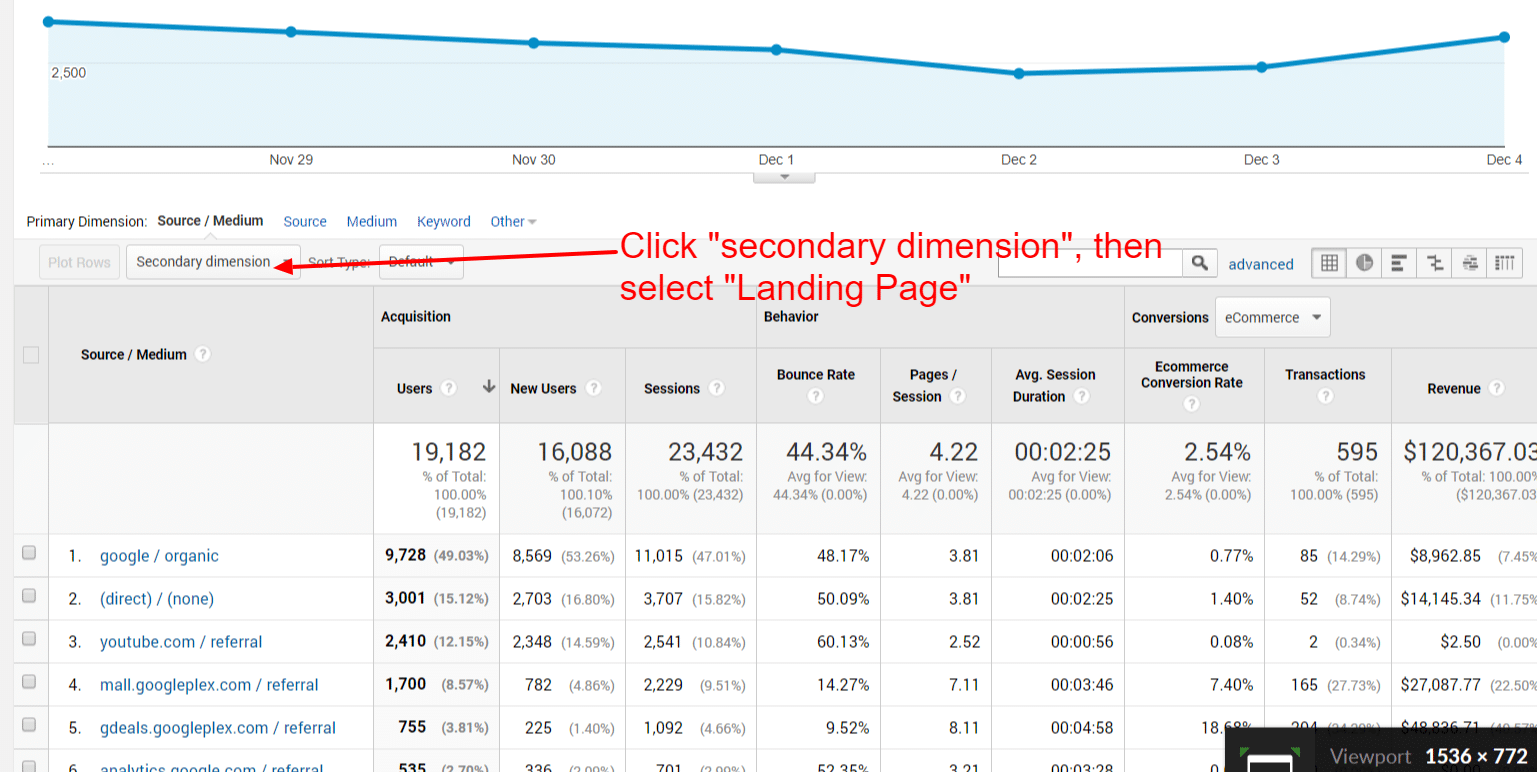Step-by-Step Overview: Leveraging Secondary Dimension in Google Analytics
Step-by-Step Overview: Leveraging Secondary Dimension in Google Analytics
Blog Article
Enhance Your Information Analysis Utilizing Additional Measurement in Google Analytics
Exploring the capacities of additional measurements in Google Analytics opens a world of possibilities for refining information analysis. By layering added measurements onto primary information collections, an even more intricate story emerges, dropping light on user communications and efficiency signs.
Comprehending Secondary Dimensions
In the world of information evaluation, a vital facet to understanding is the principle of additional dimensions and their value in removing deeper understandings from Google Analytics records. Secondary measurements in Google Analytics refer to additional criteria that can be contributed to the main measurement, permitting for a more in-depth analysis of information. By including second measurements, analysts can segment and filter data to reveal patterns, patterns, and relationships that might not appear when looking at the data as a whole. These additional measurements can give context and a much more detailed understanding of user behavior, website traffic sources, and other crucial metrics tracked by Google Analytics.

Benefits of Making Use Of Second Dimensions
When assessing information in Google Analytics, the usage of second measurements uses indispensable insights into customer behavior and performance metrics. By adding a second dimension to your main data, you can dig much deeper into the attributes of your internet site visitors and their communications. One of the essential benefits of making use of second dimensions is the capacity to segment and compare data better. This division allows you to comprehend just how various variables, such as demographics or traffic resources, effect user actions and conversions (Secondary Dimension in Google Analytics).
Furthermore, second dimensions boost the context of your main data, offering a more comprehensive sight of customer interaction and efficiency metrics. In general, the usage of additional dimensions in Google Analytics can considerably improve the deepness and top quality of your information analysis, leading to even more informed decision-making and improved outcomes.
Just How to Add Second Dimensions
By integrating second dimensions in Google Analytics, individuals can gain much deeper insights into their data evaluation procedure, allowing for even more thorough evaluation of customer behavior and performance metrics. Including second measurements is a simple procedure that can dramatically boost the depth of evaluation. Once in the record, find the "Secondary measurement" tab over the information table.
Analyzing Information With Secondary Dimensions
Using additional measurements in data evaluation offers a more thorough understanding of user actions and efficiency metrics. By adding an additional measurement to your main information embeded in Google Analytics, you can delve deeper into the features of your internet site site visitors and their interactions. As an example, integrating the key dimension of 'source/medium' with the additional measurement of this article 'touchdown web page' can disclose which certain pages are drawing in traffic from various resources, aiding you enhance these web pages for far better involvement.

In significance, examining information with additional measurements equips you to acquire valuable insights right into customer actions, identify patterns, and make educated decisions to enhance the efficiency of your digital residential properties.
Ideal Practices for Additional Dimensions
In data analysis, including second dimensions efficiently can significantly improve the depth of understandings stemmed from metrics and individual behavior patterns. When using secondary measurements in Google Analytics or any type of various other analytical tool, it is important to abide by ideal methods to make sure the accuracy and importance of the data analysis.
One trick ideal method is to very carefully pick secondary dimensions that enhance the main dimension being examined. Choosing secondary measurements that give additional context or more division can supply a more comprehensive understanding of the data. It is also necessary to stay clear of overcomplicating the view it now analysis by consisting of as well lots of secondary dimensions, which might cause complication or dilution of insights.
Furthermore, it is advisable to experiment with different mixes of main and additional measurements to reveal brand-new relationships and fads. Consistently assessing and refining the choice of additional dimensions based upon the particular objectives of the evaluation can result in even more workable insights. By complying with these ideal methods, information analysts can leverage secondary measurements effectively to improve the general data analysis process and decision-making capabilities.

Verdict
Finally, incorporating secondary measurements in Google Analytics is important for a detailed data evaluation technique. By leveraging secondary dimensions along with primary ones, experts and marketers can reveal useful insights and relationships that can educate decision-making and enhance electronic advertising and marketing techniques. Comprehending how to effectively make use of additional dimensions and following finest methods will allow professionals to remove purposeful information and enhance their overall performance metrics.
Second dimensions in Google Analytics refer to extra specifications that can be included to the main dimension, enabling for a more thorough evaluation of data. By integrating second dimensions, analysts click here for more info can segment and filter information to discover patterns, patterns, and relationships that might not be evident when looking at the information as a whole. Integrating the key measurement of 'source/medium' with the second dimension of 'landing page' can disclose which specific pages are attracting website traffic from various sources, assisting you optimize these web pages for better interaction.
One key finest practice is to carefully select secondary measurements that complement the main measurement being analyzed. By adhering to these finest practices, information analysts can leverage secondary dimensions efficiently to improve the overall information analysis process and decision-making capacities.
Report this page